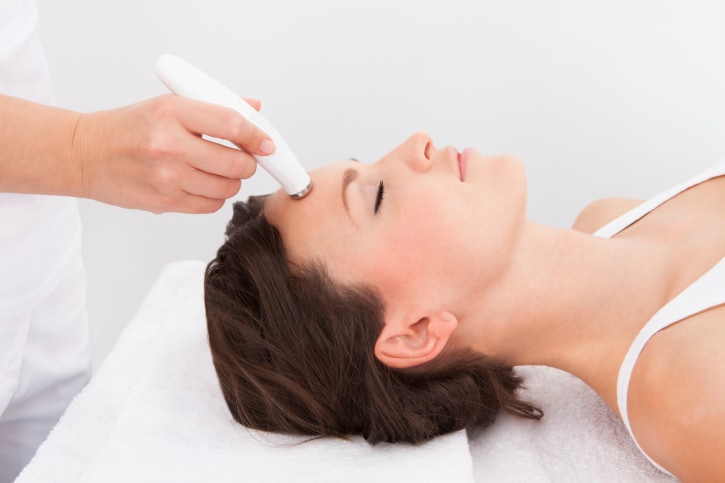Low-level laser therapy with safe lasers (LLLT) through its stimulation of tissue repair can assist in healing of wounds caused by ulcers. LLLT accelerates tissue regeneration and repair by promoting cellular metabolism. It stimulates fibroblast activity, collagen synthesis, and angiogenesis (formation of new blood vessels) which are vital procedures for wound healing. It may speed up closing of wounds.
LLLT can reduce inflammation by inhibiting the release pro-inflammatory cytokines. It also promotes the production of antiinflammatory mediators. In ulcerative wounds, where inflammation can delay healing and cause damage to the tissue, LLLT can help reduce inflammation and create a favorable environment to heal.
Pain relief LLLT alters the perception of pain by affecting the nerve conduction. This decreases the release of pain mediators such as the substance P. In cases of ulcerative injuries which are often connected with discomfort and pain, LLLT may help relieve pain and improve overall patient satisfaction.
Enhanced Circulation – LLLT enhances vasodilation, microcirculation and blood flow. The improved blood flow provides oxygen and nutrients, which promotes healing. It also facilitates the removal waste products and harmful substances from the wound site.
LLLT's antimicrobial effect can lower the risk of infection in wounds that are ulcerative. LLLT can reduce wound infections by preventing colonization and promoting bacterial elimination.
LLLT helps reduce scars by promoting the regeneration of tissue and the process of remodeling. LLLT boosts collagen production and helps align collagen bundles, resulting in a more solid, organized scar. This results in better cosmetic outcomes.
Safe Laser's low-level laser treatment is safe, non-invasive and drug-free. It aids in faster healing and less pain. The treatment also improves the overall outcome of wounds. It is crucial to speak with a medical professional about the appropriate treatment of wounds. View the top
safe laser bérlés for blog advice including gyógyító lézer készülékek, otthoni lézer kezelés, laser lézer, laser kezelés, lágylézer hatása, lezer kezeles, lágylézer bérlés, lézeres fájdalomcsillapítás, lágylézer készülék bérlés, laser kezelés and more.

How Does Safe Laser Low-Level Laser Therapy (Lllt) Help In The Treatment Of Ear Problems?
Low-level laser therapy (LLLT) can help with many ear-related issues by using a variety of methods: Reduction of Inflammation- LLLT has anti-inflammatory effects that help to reduce inflammation in the ear canal and middle ear. For conditions like the otitis externala (inflammation of the ear's outer canal) or Otitis media (middle ear infection), LLLT can help relieve inflammation and the associated symptoms, such as swelling and pain.
LLLT helps to relieve the pain associated with ear disorders like earaches, otitis and ear aches.
LLLT promotes tissue regeneration and repair by accelerating healing. LLLT stimulates faster tissue repair and regeneration in cases of otitis media or punctures to the eardrum. This decreases the chance of complications, while also improving overall well-being of the ear.
Improved Blood Circulation – LLLT improves vasodilation, microcirculation and blood flow to the ear. A better blood flow can provide nutrients and oxygen to the injured or inflamed tissues, which aids in healing and lessening inflammation.
Treatment of TinnitusTreatment of Tinnitus LLLT is being studied as a potential treatment for tinnitus. It is a condition that is characterized by buzzing or ringing in the ear. Although the precise mechanism of LLLT isn't known but it can increase blood flow to the auditory system, and also reduce inflammation, resulting in reduced the occurrence of tinnitus.
LLLT reduces earwax and buildup of cerumen making it easier to remove. This also decreases the risk of infection or ear blockage. This is especially beneficial for individuals prone to excessive earwax production, or for those who suffer from earwax obstructure.
Overall, safe Laser low-level laser therapy is an effective and non-invasive approach to treating a range of ear disorders that can alleviate signs like inflammation, pain, and earwax buildup. Talk to an ENT (ear, nose and throat) specialist for a proper diagnosis of the condition and get advice on how to treat it. Follow the recommended safe laser 150 for site examples including lézer kezelés hatása, lézer bérlés, lágylézer bérlés, safe laser készülék, otthoni lézer kezelés, orr lézer készülék, lágylézeres készülék, orr lézer készülék, lézeres fájdalomcsillapítás, lágylézer kezelés árak and more.
What Is The Average Time It Will Require For A Laser To Be Effective In Acute Situations?
Safe Laser can be used to treat ailment that is acute. The number of sessions needed to achieve outcomes is dependent on the severity of a condition and how the patient responds to treatment and the procedure a doctor suggests. However, in many instances patients may begin to experience noticeable improvements after a couple of sessions of low-level laser therapy (LLLT) for acute conditions.For acute conditions such as recently-injured, acute inflammation or sudden episodes of pain, LLLT can often provide rapid relief. In certain instances, patients may experience relief from pain, reduced swelling and inflammation even after one or two LLLT treatments. For long-lasting and lasting effects, it's generally advised to undergo an entire series of LLLT sessions.
The frequency and duration of LLLT sessions required to treat acute conditions depends on the nature of the condition as well as the severity and response of the patient to the treatment. Healthcare professionals usually modify the treatment regimen according to the individual needs of each patient. This could include scheduling LLLT several times a week for a set duration.
If you're looking to enjoy the full advantages of LLLT treatment, you must to adhere to your physician's prescribed treatment plan. Make sure you attend all scheduled LLLT sessions. The continued treatment can result in improvements over time. It's important to talk with your healthcare provider should you have any questions or concerns regarding the treatment program.